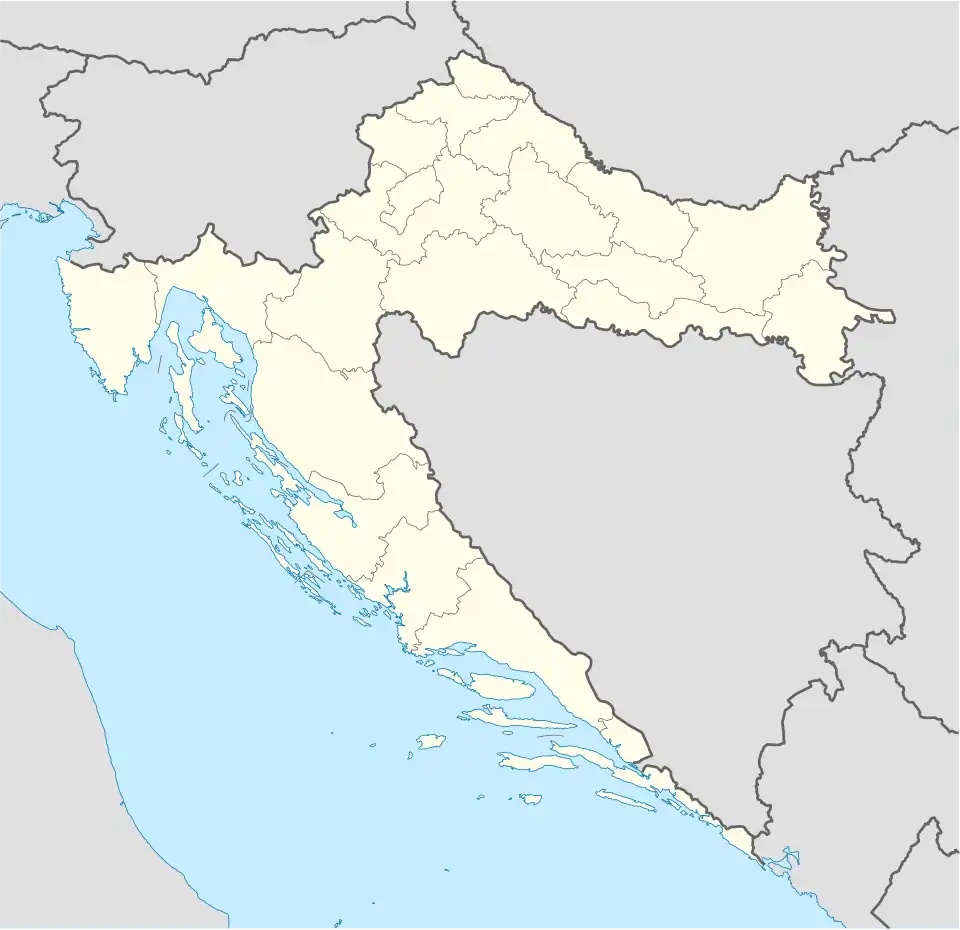Pitomača
Pitomača | |
|---|---|
 Pitomača | |
| Coordinates: 45°57′02.16″N 17°13′45.84″E / 45.9506000°N 17.2294000°E | |
| Country | |
| County | Virovitica-Podravina |
| Area | |
• Total | 158.0 km2 (61.0 sq mi) |
| Population (2021)[2] | |
• Total | 8,402 |
| • Density | 53/km2 (140/sq mi) |
| Time zone | UTC+1 (CET) |
| • Summer (DST) | UTC+2 (CEST) |
| Website | pitomaca |
Pitomača is a village and a municipality in Croatia in the Virovitica–Podravina County.
In the 2011 census, it had a total population of 10,059, in the following settlements:[3]
- Dinjevac, population 458
- Grabrovnica, population 405
- Kladare, population 467
- Križnica, population 128
- Mala Črešnjevica, population 199
- Otrovanec, population 624
- Pitomača, population 5,646
- Sedlarica, population 363
- Stari Gradac, population 674
- Starogradački Marof, population 247
- Turnašica, population 333
- Velika Črešnjevica, population 515
In the same census, 98.62% were Croats.[4]
History
Since the end of the Ottoman Empire until 1918, Pitomača (named PITOMACA before 1850)[5] was part of the Austrian monarchy (Kingdom of Croatia-Slavonia after the compromise of 1867), in the Croatian Military Frontier, Warasdin-St. Georgener Regiment N°VI.[6]
References
- ^ Register of spatial units of the State Geodetic Administration of the Republic of Croatia. Wikidata Q119585703.
- ^ "Population by Age and Sex, by Settlements" (xlsx). Census of Population, Households and Dwellings in 2021. Zagreb: Croatian Bureau of Statistics. 2022.
- ^ "Population by Age and Sex, by Settlements, 2011 Census: Pitomača". Census of Population, Households and Dwellings 2011. Zagreb: Croatian Bureau of Statistics. December 2012.
- ^ "Population by Ethnicity, by Towns/Municipalities, 2011 Census: Pitomača". Census of Population, Households and Dwellings 2011. Zagreb: Croatian Bureau of Statistics. December 2012.
- ^ Handbook of Austria and Lombardy-Venetia Cancellations on the Postage Stamp Issues 1850-1864, by Edwin MUELLER, 1961.
- ^ Probably until 1881.
